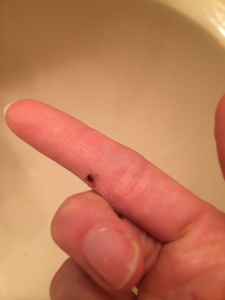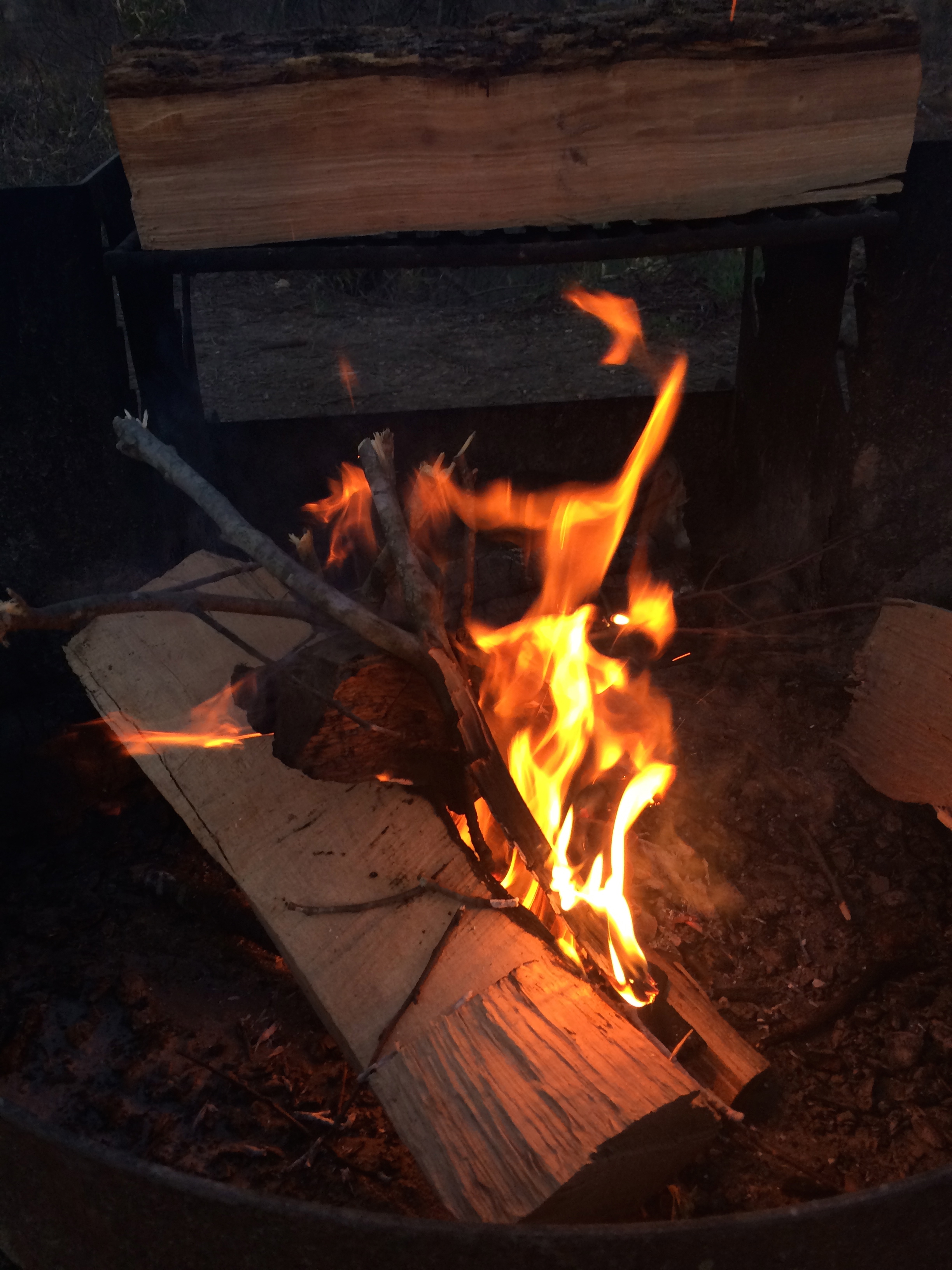Chicks and Tiggers
[two_third last=”no”]
Tick and chigger season is upon us. As people dust off the ol’ hiking boots and hit the trail, ticks and chiggers dust off the ol’ knife and fork and prepare to feast. Just kidding, these arachnids don’t use silverware, however they do eagerly feed on humans.
Yes, ticks and chiggers are arachnids, not insects. Arachnids, like spiders, have 8 legs instead of 6. Other members of this class include scorpions. People pick up ticks and chiggers in tall grass, forests and even yards sometimes. The pests simply wait on the dangling end of grass or brush until an unsuspecting animal happens by. Then they attach themselves to that animal using specialized mouthparts designed to ingest a liquid lunch. Ticks feast on blood while chiggers take in liquefied skin. The larval stage of ticks are often referred to as seed ticks, which are only slightly larger than the punctuation in this blog. After a blood meal, seed ticks fall the to ground, molt and enter the adult stage, where they seek another blood meal and reproduce. Females lay thousands of eggs in the leaf litter then die. In Missouri the three most common species of ticks are the lone star tick, American dog tick and deer tick.
Chiggers, unlike ticks, only feed on other animals during their larval stage, in which they are nearly invisible to the naked eye. Adult chiggers resemble mites, like those tiny, bright red mites you’ve seen scurrying around on rocks in the sun. Contrary to popular belief, chiggers do not burrow into your skin. In fact, by the time you notice the itchy welts, the chiggers is likely long gone. It doesn’t take such a tiny organism long to fill up the tank and leave its host. What actually causes the continued itch is a hardened structure created by your body in reaction to the chigger’s specialized spit, which liquefies skin tissue. This tiny structure remains in the skin even after the chigger is gone and causes a maddening itchy fit.
When finished with your outdoor adventure, it is important to check yourself thoroughly for ticks. Get naked, get a mirror and get to it. Ticks can transmit diseases such at Lyme disease and Rocky Mountain spotted fever, so it is important to remove the tick as soon as possible and monitor the bite area and your symptoms. To remove a tick, simply grasp its head as close to your skin as possible using your fingers or tweezers and pull straight out. Never try to burn or bleach a tick off. It’s simply unnecessary and can cause the tick to inject its contents into you. If the bite area becomes raised, with a red ring around it or if you begin to feel flu-like symptoms, its time to seek medical help immediately. Chiggers are not known to transmit any diseases and they are much easier to remove. As soon as you step out of the woods, simply give any exposed skin a brisk brush with a towel or your hands. This action is enough to kill or remove the tiny chiggers. Any that remain under your clothes will be easily removed with a shower when you get home. Remember however that by that time, the chiggers are probably already gone and all the remains is the itchy bites.
Your best defense against ticks and chiggers is to cover as much of your skin with tightly-fitting clothing as possible. But with Ozarks summers being warm and humid this isn’t always a practical option. Instead you should use a repellant containing DEET, which will also repel mosquitos, flies and gnats as a bonus.
Ticks and chiggers are just an unfortunate part of exploring the beautiful Ozarks. Spend enough time outdoors and you will encounter these pests more than a few times. However, preventative measures and prompt removal and monitoring of bites mean that your chances are good of surviving these tiny parasites. Don’t be intimidated, be informed and enjoy your outdoor adventure.
[/two_third][one_third last=”yes”]

Thankfully, this tiny tick was found before any damage was done.
[/one_third]

